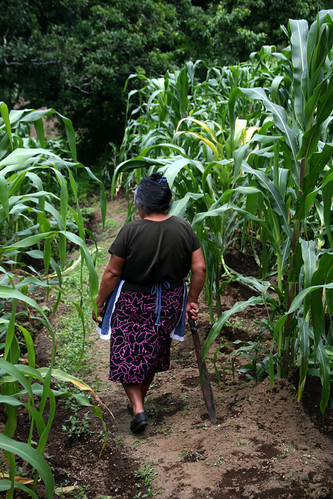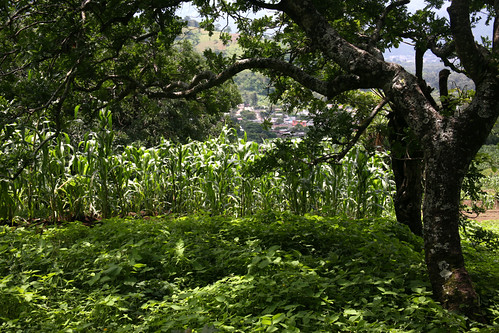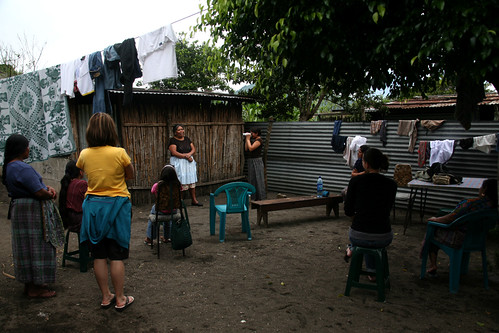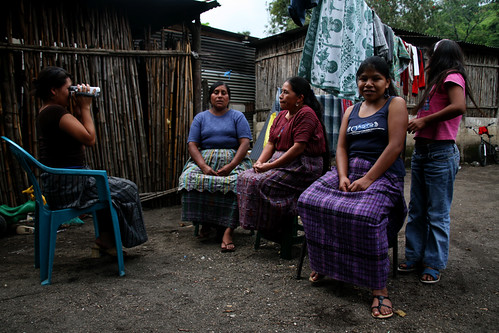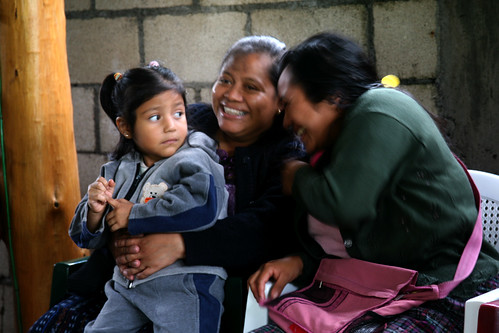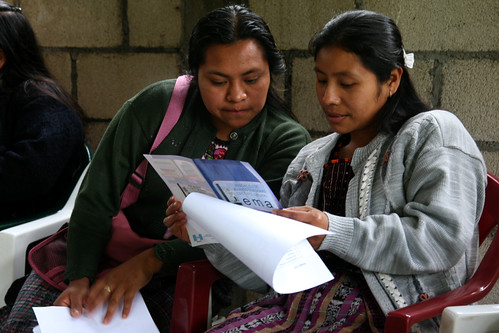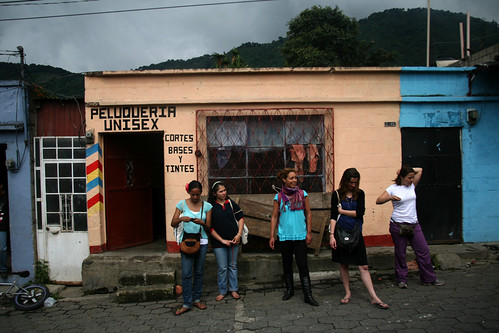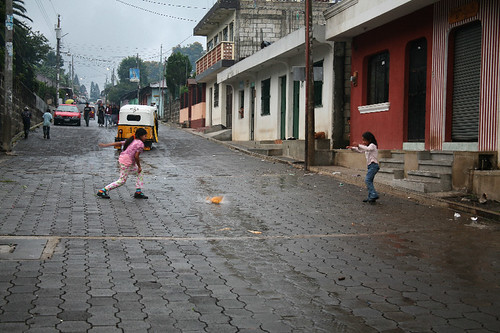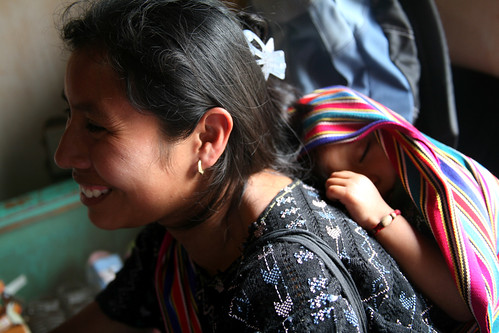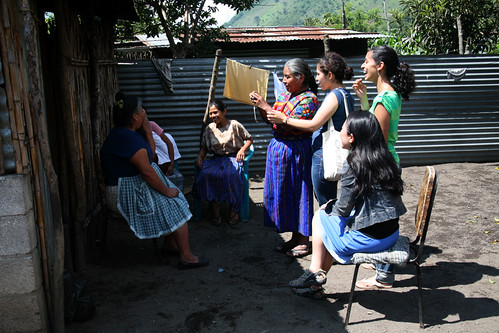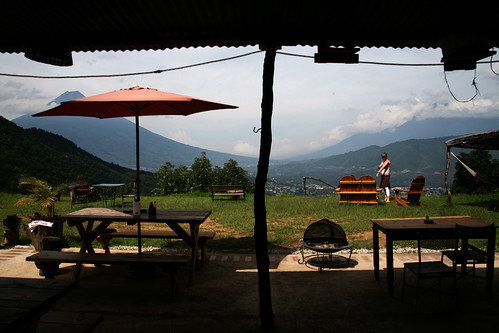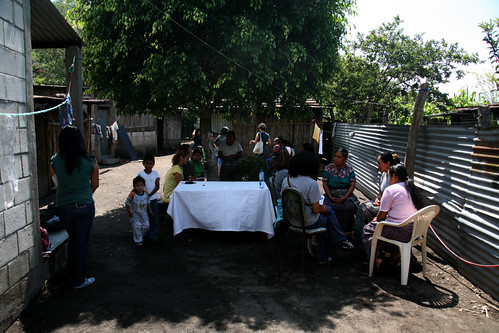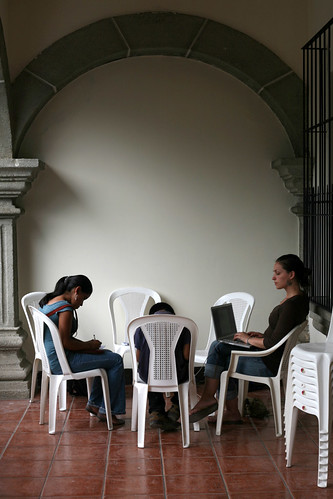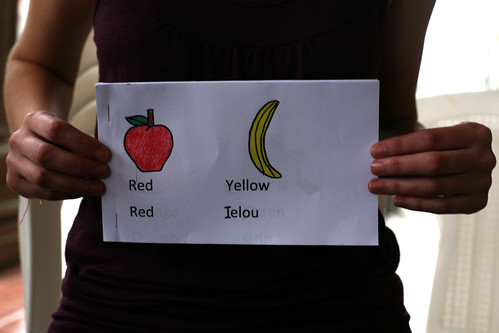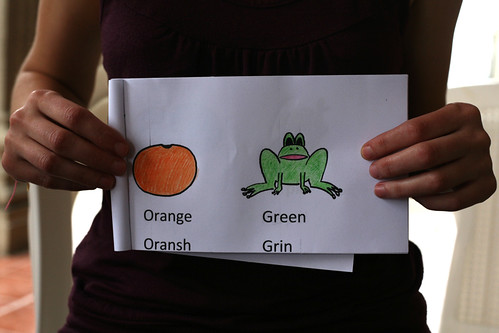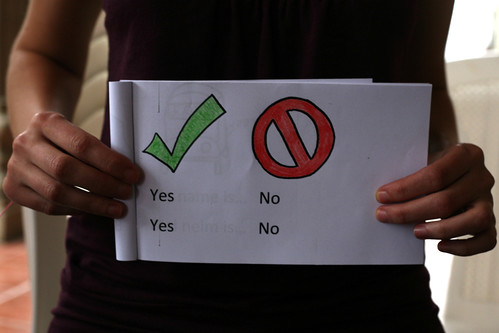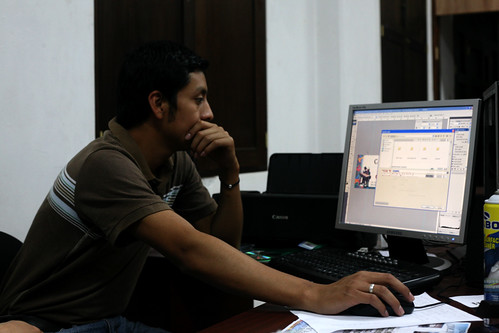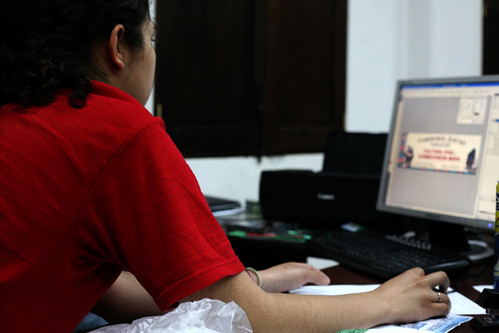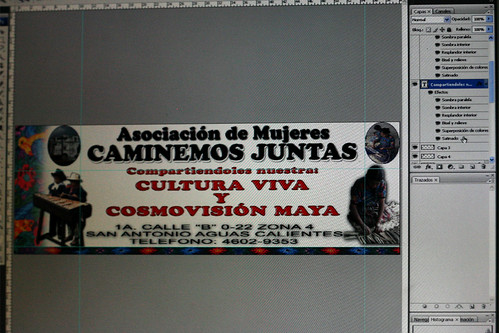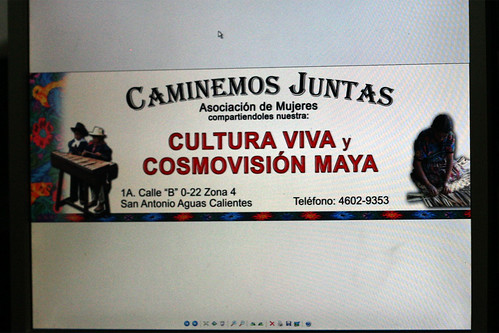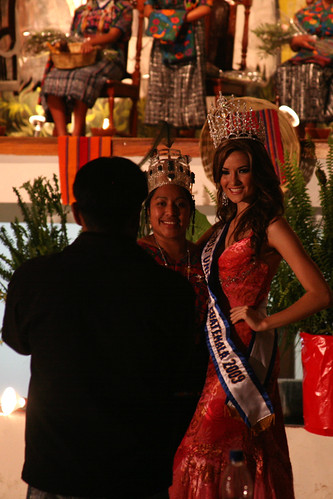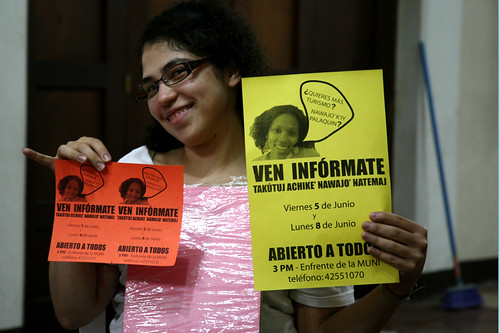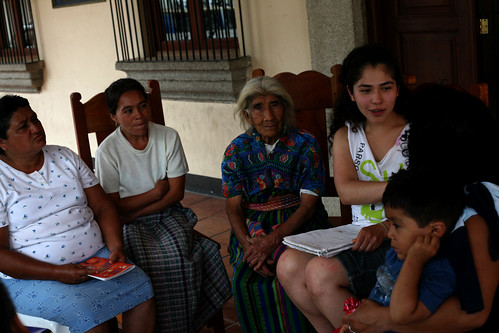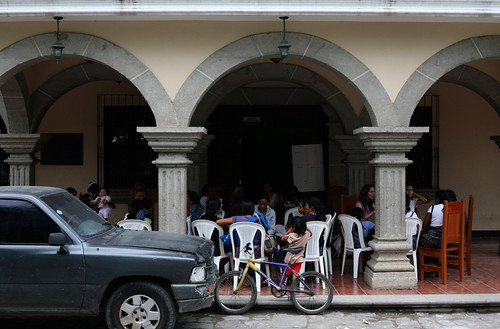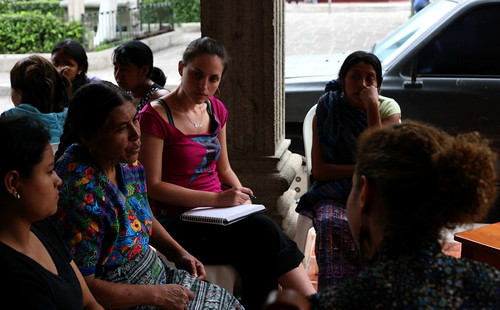As we push open the corrogated metal gate to Lucia's yard we hear the familiar sounds of life in Santiago Zamora--Emmanuel's tiny feet on the dirt as he giggles and hides behind his mothers corte, the puppies whining from beneath thier overturned basket (which keeps them from chewing on the petate as the women weave), and the chirp of the chickens wandering in and out of our circle of chairs. As I edit the collection of clips from this past week, I hear the chorus of sounds that we have become accustomed to in Santiago Zamora and am amazed by this beautiful footage shot by the women in the group.
This video marks the first collaboration in our media project with the "Estrellas de Santiago Zamora", as they have donned themselves. After our first media workshop, the women requested that we continue filming and create a longer feature showing thier art, thier lives, and their stories. The week started off with "story-boarding" in which the women brainstormed a theme for the project and images that would show thier lives. We gave a brief workshop on filming techniques (mainly on framing, lighting, and sound) and had all the women experiment with the cameras. By Friday we had hours of beautiful footage--the majority filmed by the women themselves. I can't wait to finish editing and show the women their beautful work.
Glendi, who filmed for the majority of the week:








